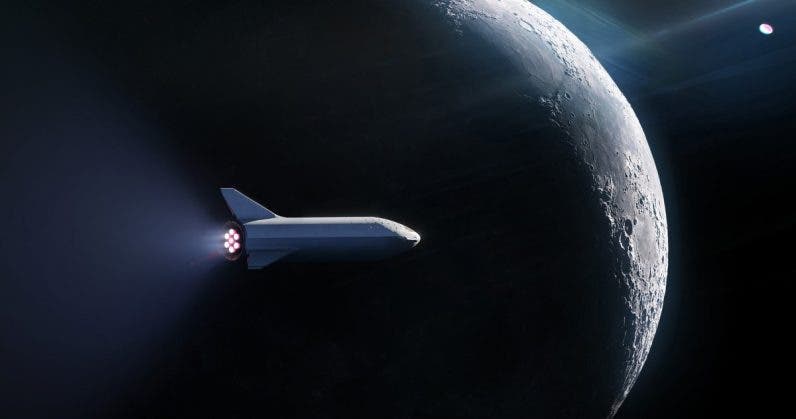SpaceX is set to send a private passenger on a flight around the moon. This journey will be made aboard the company’s upcoming Big Falcon Rocket (BFR), which is designed to take up to 100 people as far away as Mars.
Initially, the company announced it would send two passengers around the moon on a Falcon Heavy and that the flight ought to happen at the end of 2018. It’s not clear at this point whether the passenger is one of these two persons or someone new altogether, but one of Elon Musk’s tweets suggests the individual may be Japanese. The identity of the passenger will be live-streamed on Monday, September 17 at 9 PM ET, along with further details.
SpaceX has signed the world’s first private passenger to fly around the Moon aboard our BFR launch vehicle—an important step toward enabling access for everyday people who dream of traveling to space. Find out who’s flying and why on Monday, September 17. pic.twitter.com/64z4rygYhk
— SpaceX (@SpaceX) September 14, 2018
The rocket (BFR) and spacecraft (Big Falcon Spaceship — BFS) that will carry this lucky passenger around the moon was first presented by Musk last year at the International Astronautical Congress. Both the BFR and BFS are designed to be reusable and to land automatically, like the famous Falcon 9 has demonstrated numerous times in the past.
According to Musk’s initial plan, the 348-foot-tall (106-meter) BFR system is powered by 42 Raptor engines. It should be capable of carrying up to 100 people in a pressurized passenger space that’s larger than that of an Airbus A380 airplane. BFR consists of a 190-foot (58-meter) tall booster for its first stage, and a 157-foot (48-meter) tall spaceship that also doubles as a second stage.
Besides people, the launch system will be capable of ferrying cargo across the globe or to and from the International Space Station. A BFR flight could take a person from Los Angeles to New York in 25 minutes. Being capable of launching satellites, BFR will also become an important contributor to the company’s bottom line. Eventually, the BFR will make all other SpaceX vehicles obsolete.
Ultimately, Musk said that he would like to retire all of the company’s current rockets and spacecraft — Falcon 9, the Falcon Heavy, and the Dragon spacecraft — to make way for a fleet comprised solely of BFRs.
So, when will this amazing spaceflight take place? It’s anybody’s guess, really, considering SpaceX’s track record of shifting timetables. First and foremost, the BFR would have to be ready and it’s not at all clear when this will be the case. Remember that the Falcon Heavy was first unveiled in 2011 but wasn’t ready to launch before 2018. December 2022 marks the 50th anniversary of the last human mission to the Moon, Apollo 17. Perhaps this could be an interesting (and realistic) target for SpaceX’s lunar passenger spaceflight.










